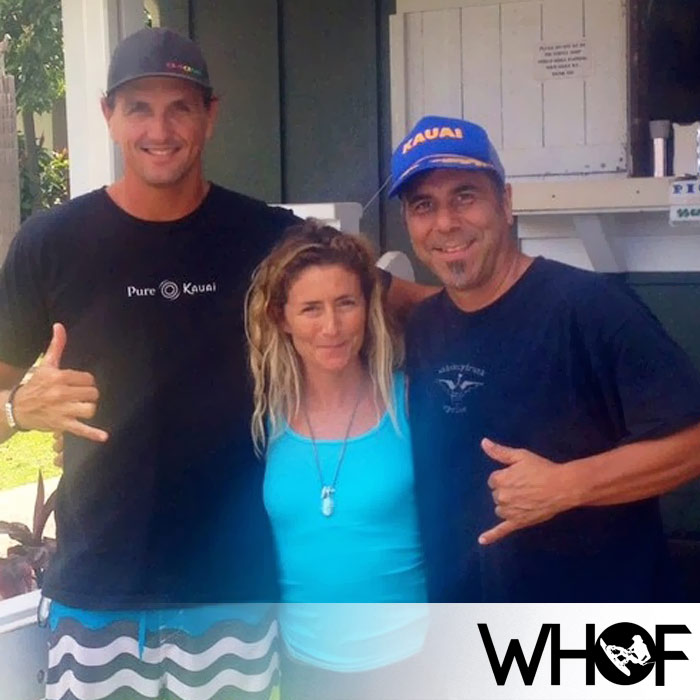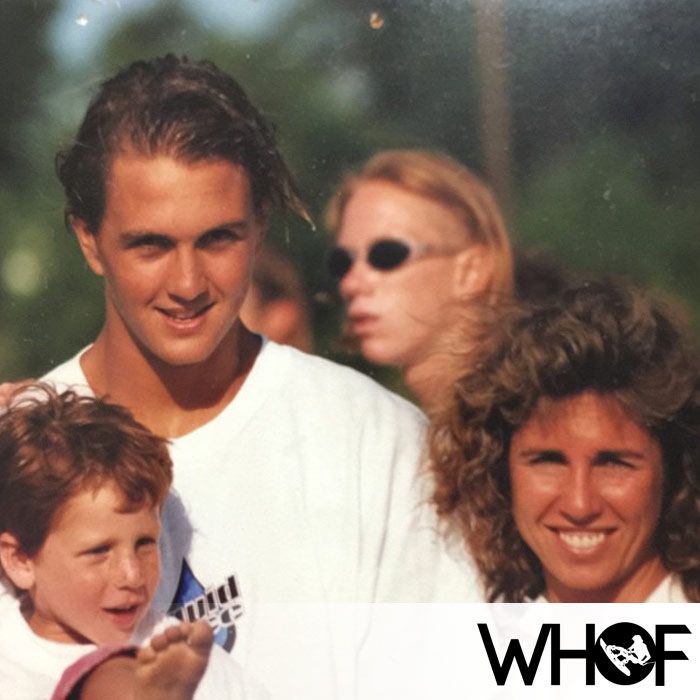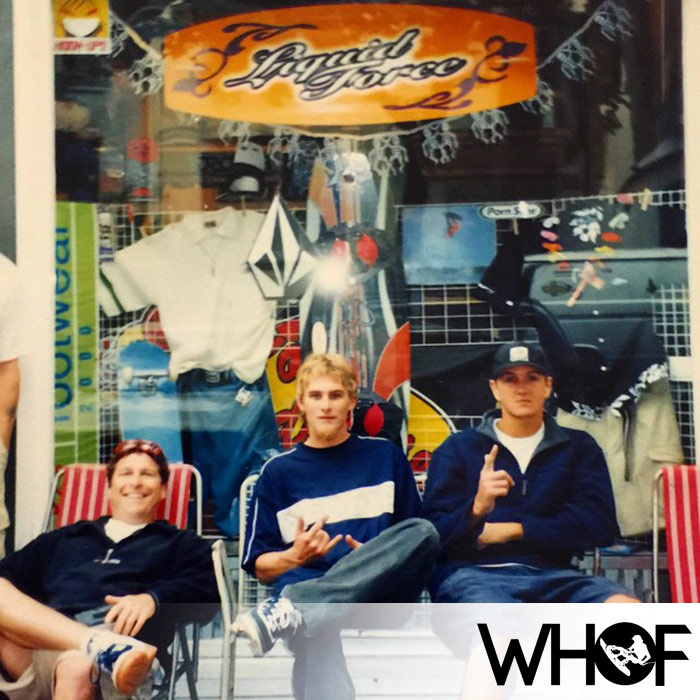
29 Jan Wakeboarding’s Hawaiian History (Part 3 of 4)
CHASING A DREAM
For a young rider back in those days, the thought of leaving the islands to pursue a professional career in an obscure sport might have seemed crazy. But Reid Shimabukuro recalls the first time he saw Ryan Siebring ride a wakeboard and was blown away.
“When I went to Kauai and I got to see him ride, he had my jaw on the boat floor,” Shimabukuro recalls. “You could tell he’s been on the Wailua River his entire life. He had so much control over his body position, rope and handle placement. I remember him starting on the coconut tree, on dry land, and John Bohling just pulling him and he just jumped right into the water. That’s how good this kid was. I knew he would be somebody if he was willing to relocate and get out of Hawaii.”
So what makes a teenager decide to give up paradise and leave their family and friends to chase a dream? For Siebring, he only needed to look to his mentor.
“I guess a lot of motivation came from Eric [Perez] at the end of the 1994 Hawaii Wakeboard Challenge,” says Siebring. “I had saved up and gone to two Pro Am’s on the mainland that year. It was the first time I ever saw a Pro Tour and I did horrible. But I met Gator and Byerly, and all these guys in the magazines. I was 15, and went back home, trained all summer and mowed yards to get enough money to go to the Portland Pro Tour stop.
“Back then, you could just compete on Friday and if you won the Pro Am Challenge I think it was called, you got one of the slots. So I had to compete against guys like Cobe Mikacich and Greg Nelson, and I actually did really well. I did a mobe, an air roll and stood up both runs. But I lost credit for a line over because I didn’t know what was the definition of the tricks. We just made stuff up on the river. But apparently, you couldn’t let the line touch the water when you hopped over it, which I didn’t know. And a couple of my grabs weren’t where they were supposed to be. I didn’t even know what a Roast Beef or Slob grab, or any of that was. So I lost credit, but I would’ve won.”
Immediately after his run, Jimmy Redmond approached Siebring, even though the young rider didn’t know who he was back then. Siebring says Redmond tried hard to get him to go Nationals the next week in Houston, but he didn’t even know what Nationals were. “I mowed yards all summer to get out here, so I got to get home,” Siebring explained to Redmond. But Redmond kept pressing him and offered him a Wake Tech sponsorship. From that point on, Siebring decided he was going to try the Pro Tour the next year in 1995. Before departing Portland, Tony Finn gave him a Wake Tech Big Air, but it was custom made for Byerly. They had put the inserts in the wrong place, but it was lighter than the ones off the rack. He took it home, tried it, and hated it.

Ryan with Bob Soven and Michele Soven back in the late 90’s
“I had been riding a Hyperlite Perez,” says Siebring, “and back then, those directional boards that Hyperlite made were light years ahead of everyone else. But I was in this tug of war because Eric was with Hyperlite and I had Jimmy and Tony doing their whole spiel, and I was sort of on the fence. Then the Flight 69 came out and that’s when I jumped because I wanted that board. It looked so cool!”
Fortunately for him, not only did he get a Flight 69, they also sent him a Skylon for his boat with the board.
From there, the chase of the dream began.
“My buddy, Justin ‘Donkey’ Caron, and I had this plan that we were going to work all winter, buy a van and drive to all the tour stops that summer,” says Siebring. “By that time, it had become an obsession. I was a sophomore in high school, and I literally had the AAA atlas under my school desk and just plotting out how we were going to drive from here to there and just figuring out how much it would cost in gas.”
“We shipped our van to California, and once it arrived, we drove from Long Beach to Hartford, Connecticut, for the Pro Tour stop. We showed up at 6:00am and check-in for the tournament was at 8:00am. I hadn’t ridden in a while because we had been road tripping for the past week, and so I didn’t do that well. But a part of my thing was that I could just crash in the hotel rooms of Wake Tech. Those hotel rooms were occupied by Rich Goforth, Byerly, Gator, Brannon Meek, definitely the cool guys of the Tour back then. While we were like these red-headed stepchildren that showed up and were like, ‘we’re sleeping on the floors of your rooms.’”

Ryan Siebring (left) with Andrea Gaytan & Eric Perez 2015 (photo credit – Ryan Siebring)
A week after he got home from the Tour, Finn and Redmond gave him a call, saying they were starting a new company called Liquid Force and wanted him to be on the new team. But nearly at that same time, Eric Perez went over to Wake Tech. “So all of a sudden, I’m stuck again making a decision to either stay with Wake Tech or go with Liquid Force. Eric was the beginning for me, and it was really awkward but I just followed my gut and jumped over to Liquid Force. Basically because they said they would pay my way across the Pro Tour for 1996. So I didn’t make any money but all of my travel expenses were covered at the Tour stops.”

Ryan with Tony Finn & Gregg Necrason in Germany in 1998
Now that he was receiving some financial support, one of the stipulations of the Liquid Force agreement was that Siebring would have to move to Orlando. With Siebring still in high school, this posed a serious problem. “I went to the same school as Bruce and Andy Irons and they were traveling nonstop for surfing. So, we basically asked if I could do the same thing.”
Unfortunately, the school didn’t agree with his request so Siebring dropped out and told his mom he’d take correspondence courses. He flew back to Florida in 1996 with just a wakeboard and nowhere to live. He crashed on Drew McGuckin’s couch for two weeks before Tony Finn hooked him up with the Sovens. “I still had zero money, but they took me in and just said, ‘train our boys.’ It was like a dream come true, and the boys were awesome. At the time, Robert was 4 and Phillip was 6.”
One of the riders who would have a great influence on his professional career was Gregg Necrason. “Gregg and I were definitely competitive with one another,” Siebring remembers. “We pushed each other with our competitiveness, and during that first year, we bumped heads hard. But after that, we totally became super close from then on out. He’s really solid and I can’t say enough good things about him.”
Siebring reached the height of his professional career in 1998 by consistently appearing in tournament finals, winning two events and getting featured sections in videos. Unfortunately, a blown knee would sideline him for the entire 1999 season. When he made his return in 2000, he immediately realized that the sport had taken a huge progressive step forward, and rails had been included on Tour, which he really wasn’t used to. Ryan had officially closed the chapter on his wakeboarding career before the Tigé US Open made a return to his home turf on the Wailua River in 2004. But being the local boy, he felt the responsibility to represent Hawaii. So he dusted off his wakeboard, and decided to compete one last time on the waters where it all began for him as a grom.
[youtube id=”qNNPjnsJp8w” align=”left” autoplay=”no” maxwidth=”750″]
-Come back next week for the final installment which focuses on RNR Surf & Ski, and it’s owner’s Reid Shimabukuro & Lance Brug who created the infamous Hawaii Wakeboard ProAm-



Sorry, the comment form is closed at this time.